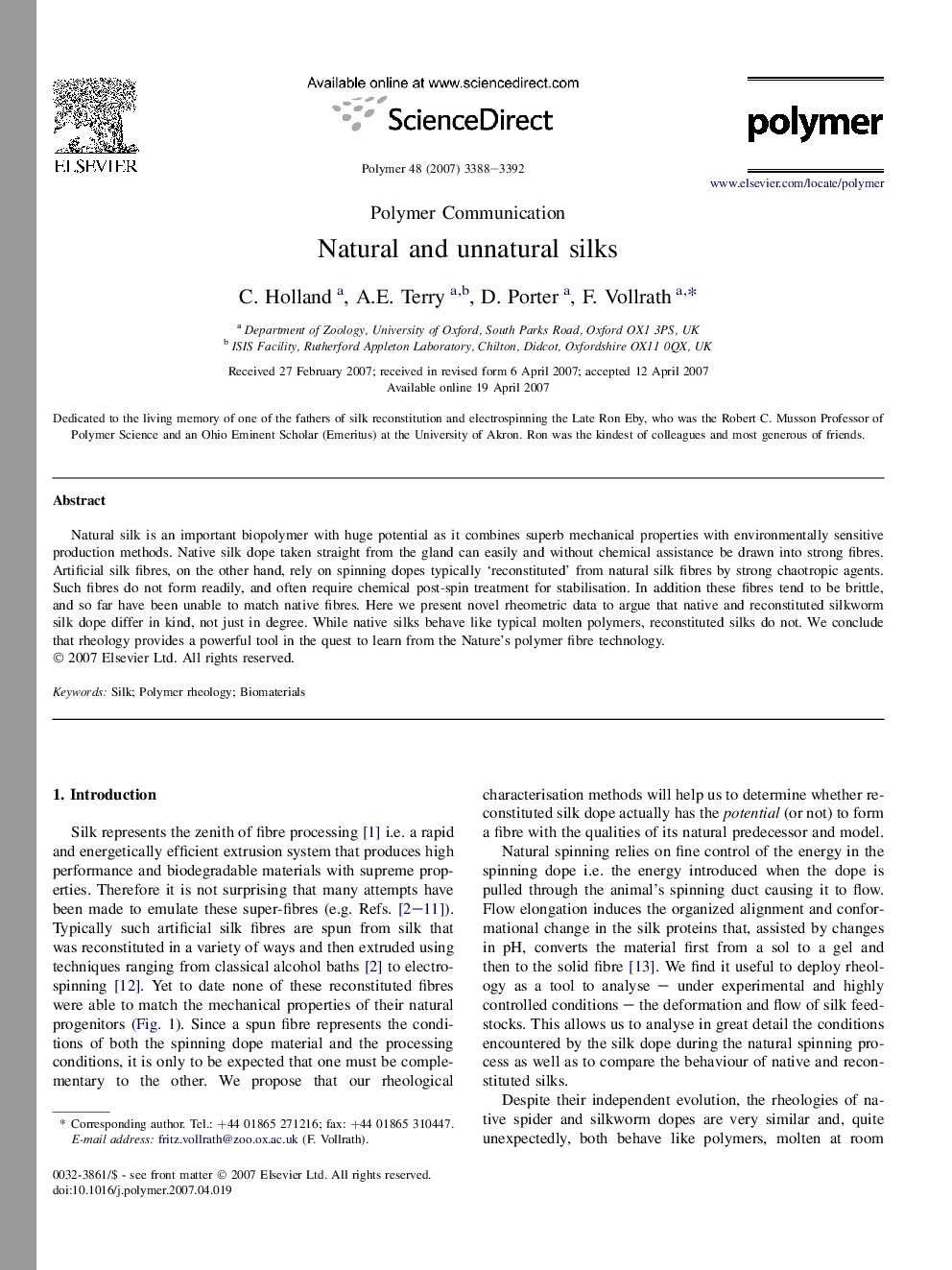| Article ID | Journal | Published Year | Pages | File Type |
|---|---|---|---|---|
| 5190142 | Polymer | 2007 | 5 Pages |
Abstract
Natural silk is an important biopolymer with huge potential as it combines superb mechanical properties with environmentally sensitive production methods. Native silk dope taken straight from the gland can easily and without chemical assistance be drawn into strong fibres. Artificial silk fibres, on the other hand, rely on spinning dopes typically 'reconstituted' from natural silk fibres by strong chaotropic agents. Such fibres do not form readily, and often require chemical post-spin treatment for stabilisation. In addition these fibres tend to be brittle, and so far have been unable to match native fibres. Here we present novel rheometric data to argue that native and reconstituted silkworm silk dope differ in kind, not just in degree. While native silks behave like typical molten polymers, reconstituted silks do not. We conclude that rheology provides a powerful tool in the quest to learn from the Nature's polymer fibre technology.
Keywords
Related Topics
Physical Sciences and Engineering
Chemistry
Organic Chemistry
Authors
C. Holland, A.E. Terry, D. Porter, F. Vollrath,
